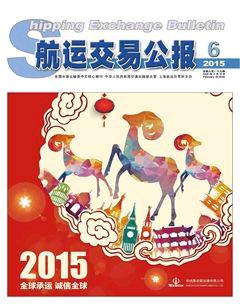Weekly Commentary on China Containerized Transportation
Liu+Zijia

In the week ending Jan.30, China export box market sees transport demand stable in general, but impacted by the delivery of mega vessels, demand/supply condition is not improved evidently, with spot rate falls. On Jan.30, China (Export) Containerized Freight Index (CCFI) issued by Shanghai Shipping Exchange (SSE) quotes 1064.82 points, almost unchanged from that last week; While Shanghai (Export) Containerized Freight Index (SCFI) issued by SSE declines 3.4% from one week ago to 1054.13 points.
In the Europe service, as the approach of Spring Festival, cargo volume grows stably, but the extent is not as much as expected. In terms of capacity, as the delivery of mega vessels, capacity increases further. According to Alpahliner, the weekly average supply of capacity has a month-on-month increase of 5% in Jan. Finally, the oversupply of capacity is worsened, and the average slot utilization rate hovers about 90%. As a result, most box liners delay rate increase plan from Feb.1, and spot rates in many services decline, with some even below USD1000 per TEU. ON Jan.30, freight rate in the Shanghai-Europe service (covering seaborne surcharges) quotes USD1153 per TEU, falling by 8.2% from one week ago.
In the Mediterranean service, cargo volume rebounds slightly, the average slot utilization rate keeps around 95%, with some even full-loaded. On Jan.30, freight rate in the Shanghai-Mediterranean service (covering seaborne surcharges) quotes USD1427 per TEU, falling by 2.3% from last week.
As the recovering of U.S. economy, transport demand in the North America service is boosted. In the USWC service, the collective negotiation makes ports congestion, and some box liners have to slate shipment space. In the USEC service, transport demand goes north, but affected by the addition of capacity bypass Suez Cannel, space spots get rid of short supply, the average slot utilization rate around 95%, with spot rate slip from high level. On Jan.30, freight indices in the services from China to USWC and USEC services quote 1013.58points and 1323.27 points, down by 0.4% and 2.2% comparing with that last week.
Cargo volume keeps flat in the Australia/New Zealand service recently, despite most box liners ceasing service in succession, the spot utilization rate in this week still shrinks 10%. However, the oversupply of capacity is still remarkable, the average slot hovers between 80% and 85%, with spot rate decreasing further. On Jan., freight rate in the Shanghai-Australia/New Zealand service (covering seaborne surcharges) quote USD717 per TEU, diving by 3.0% from one week ago.endprint
Transport demand tends to be firm in the Persian Gulf service, but owing to the large scales of capacity is put into service, demand/supply condition is worsened, causing the average slot utilization rate in this service around 80%. Spot rate falls further, with the lowest around USD500 per TEU. On Jan.30, freight rate in the Shanghai-Persian Gulf service (covering seaborne surcharges) quotes USD684 per TEU, down by 1.7% from one week ago. It is said that, considering that freight rates have fallen to the lowest level, part of box liners intend to hike rate in early Feb..
Cargo volume rises slightly in the Japan service, where the average slot utilization rate keeps at around 60%, with spot rate stable. On Jan.30, freight index in the China-Japan service quotes 688.91 points.
(Please contact the Information Dept of SSE for more details.)
SHIPPING EXCHANGE
BULLETIN
TOTAL EDITION: 919
10/2/2015
CONTENT FOR THIS WEEK
?China-South Korea FTA Boosts Shipping and
Ports Development
?Ports around Bohai Sea District Layout Competitively
?Short-Range Ocean Transportation Embraces the
Golden Age
?Analysis of the Local 2015 Government Work Report
?2M Makes Troubles in Asia-Europe Trade
?Columbia Shipmanagement Company Penetrates
into the Chinese Marketendprint

